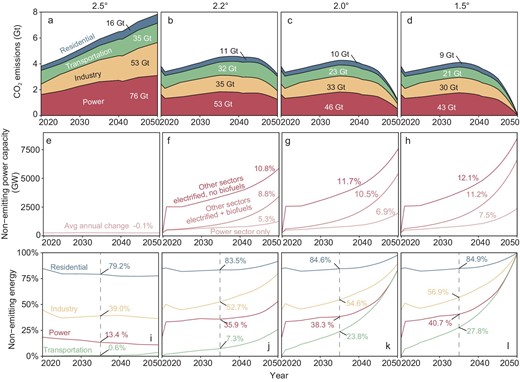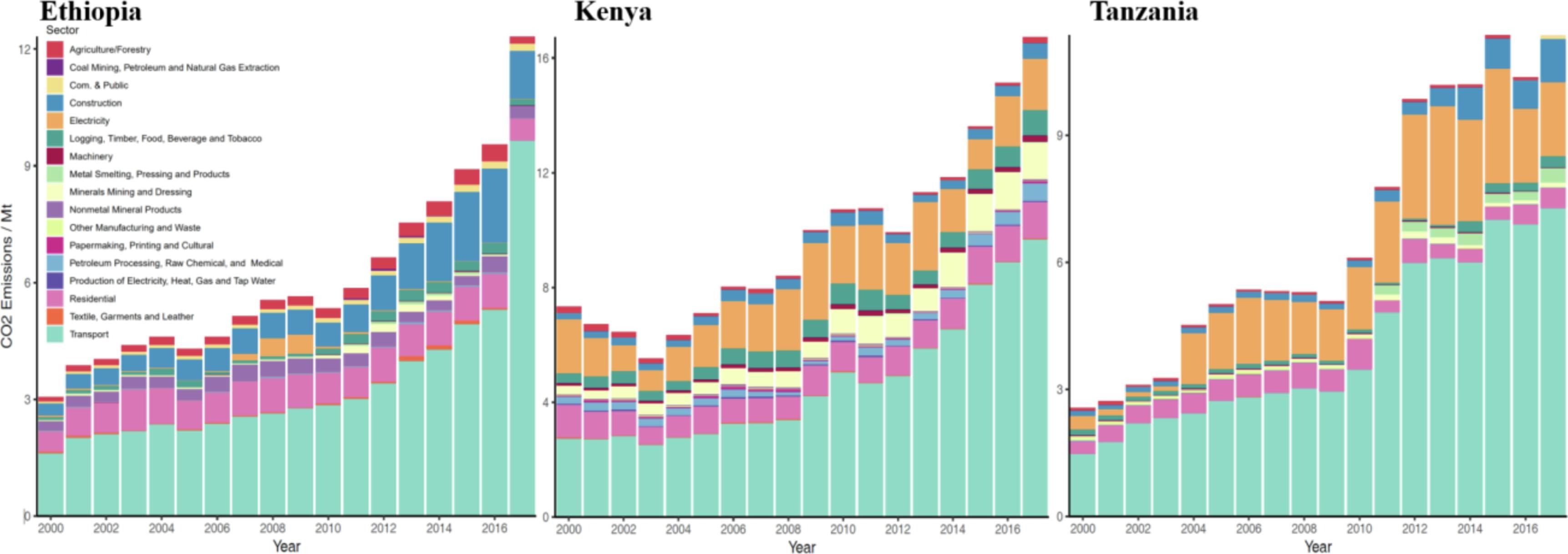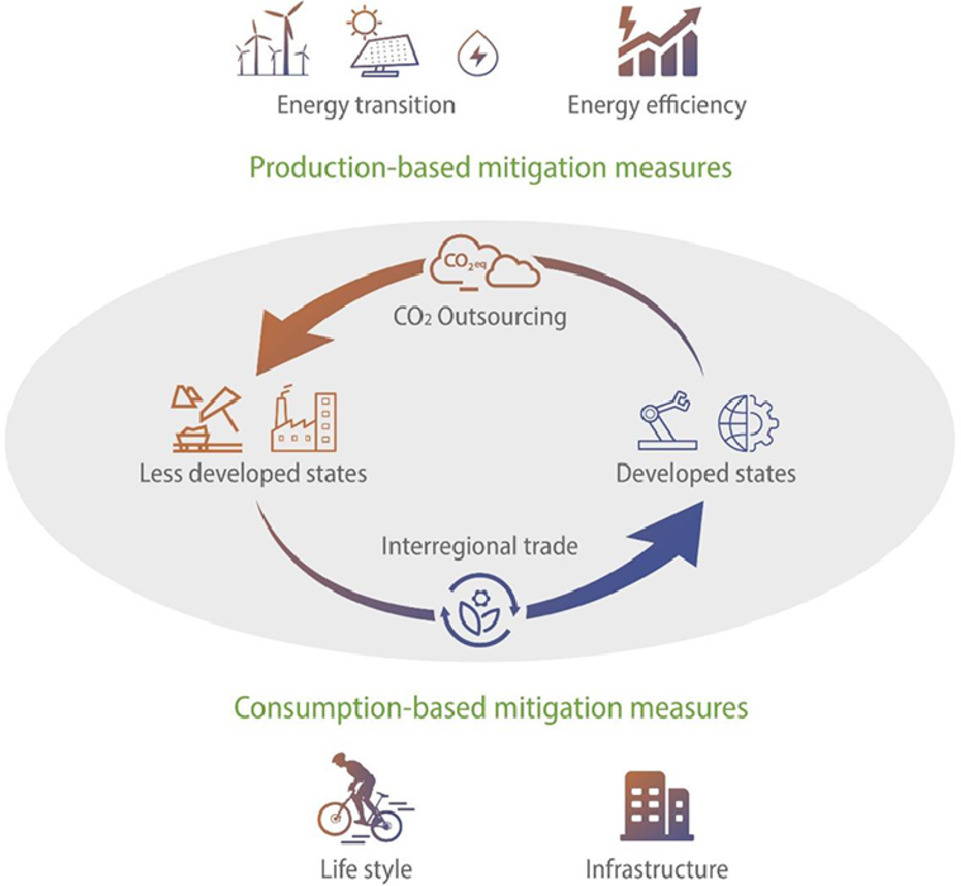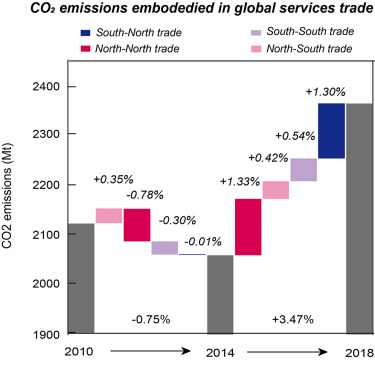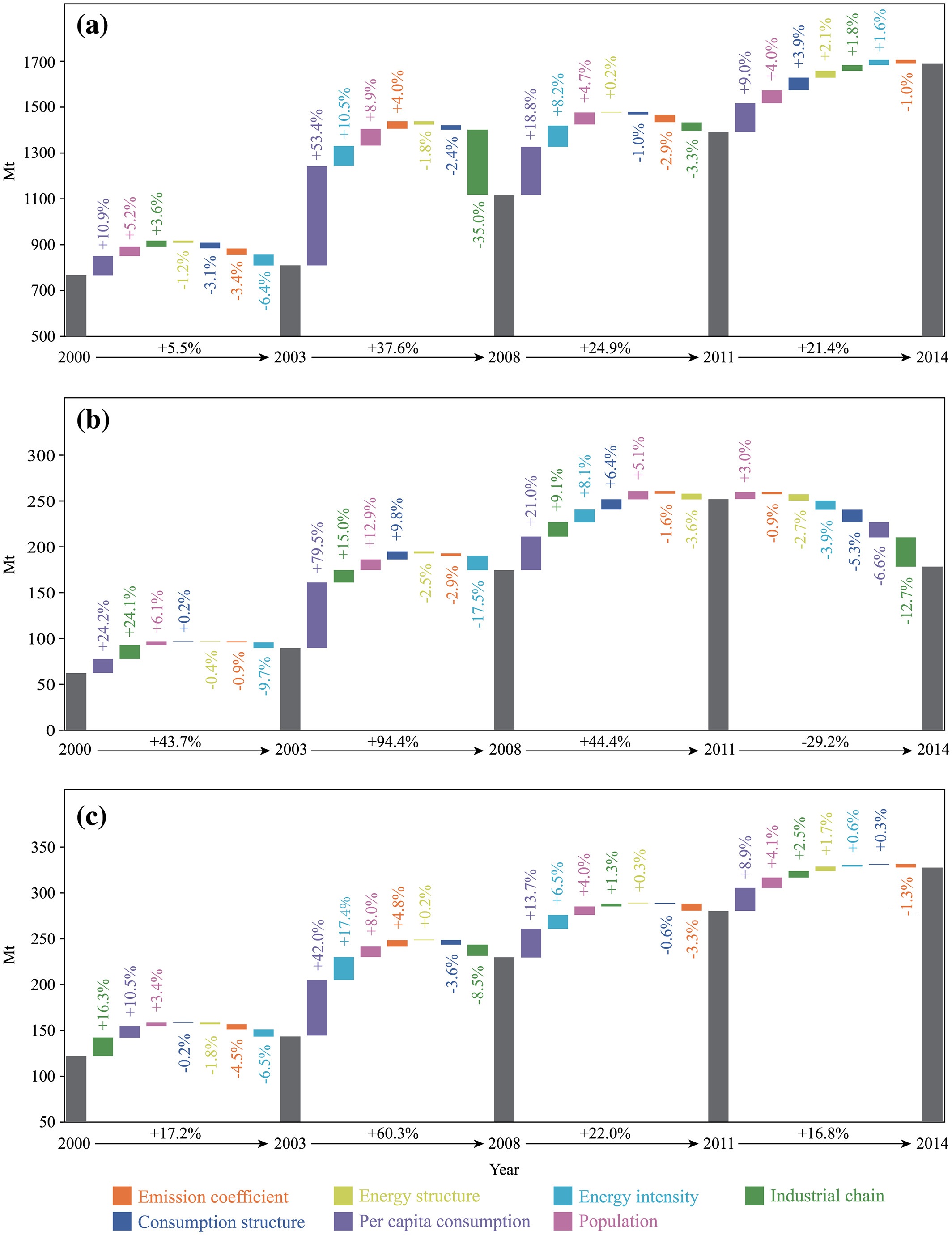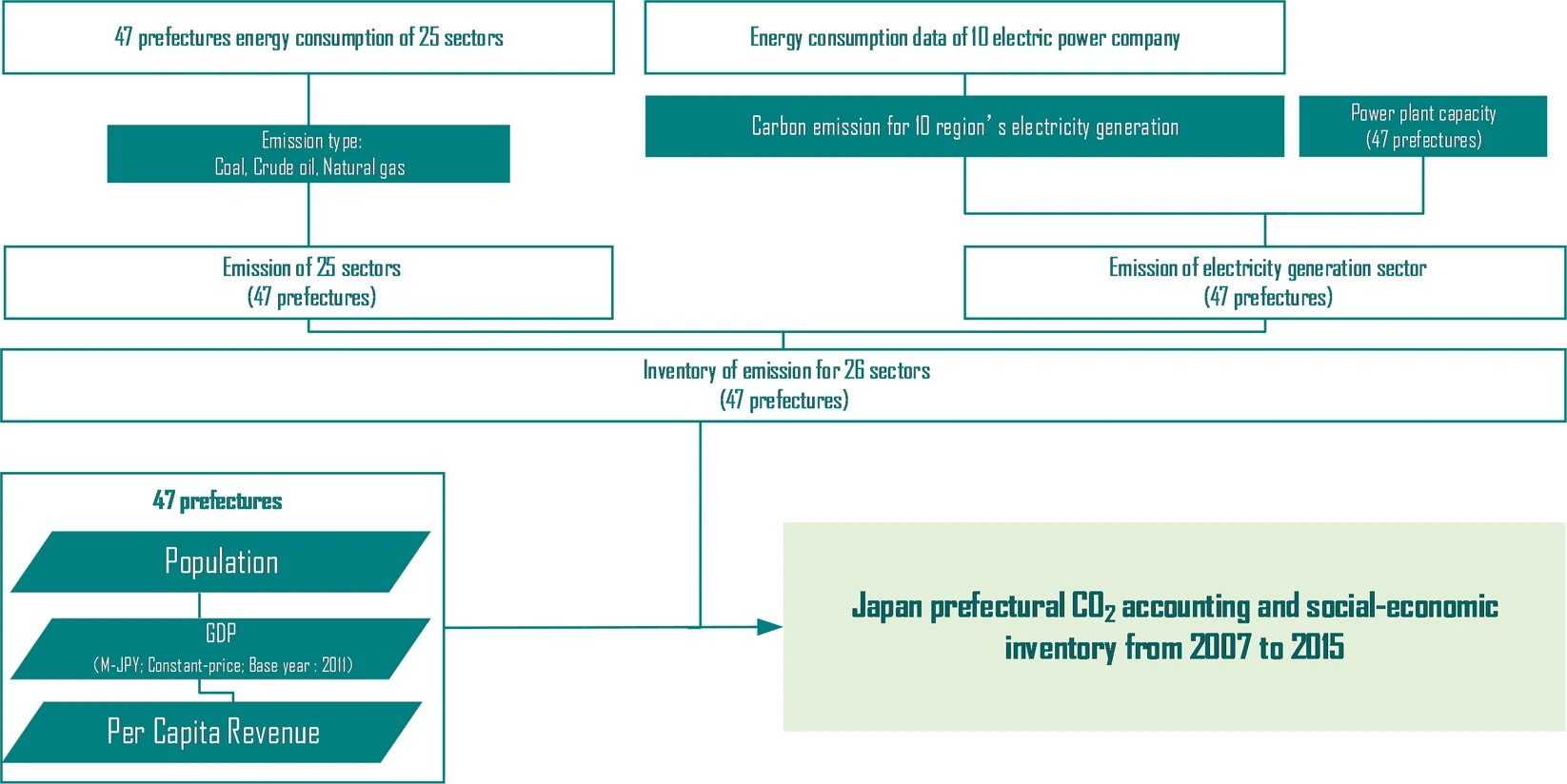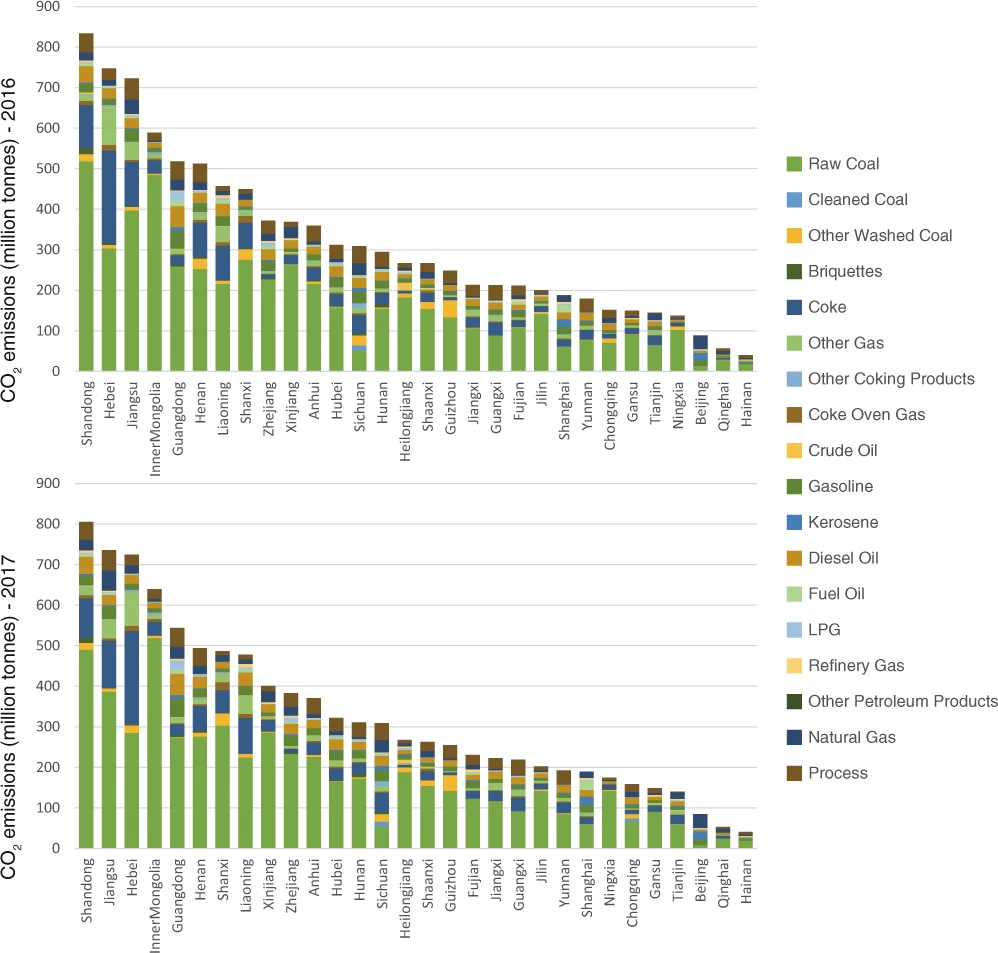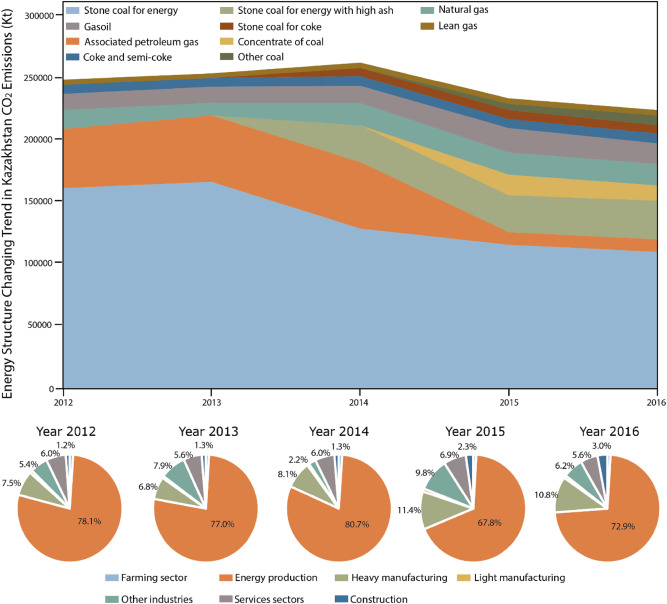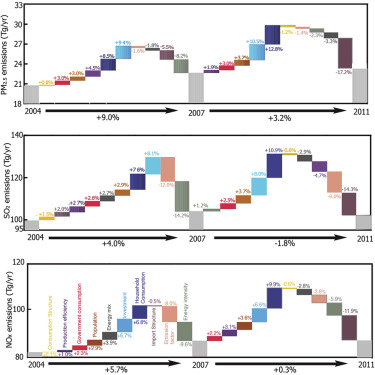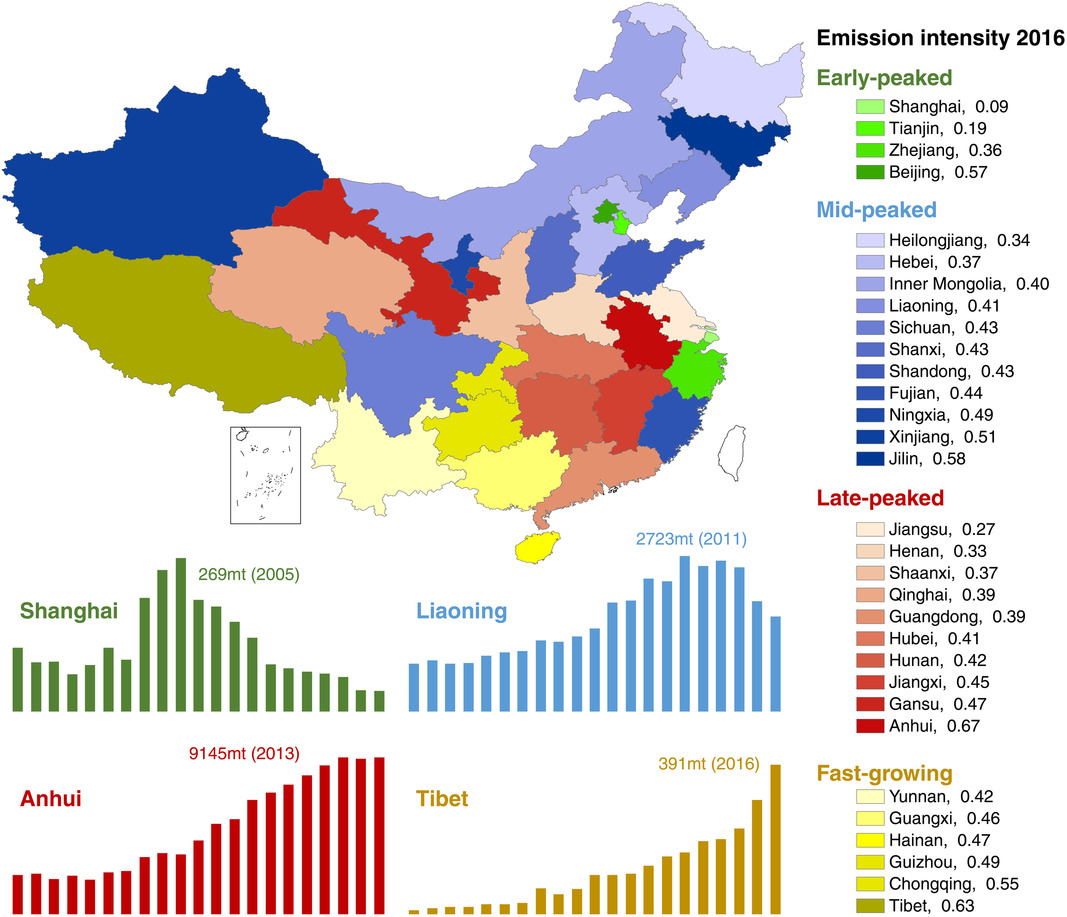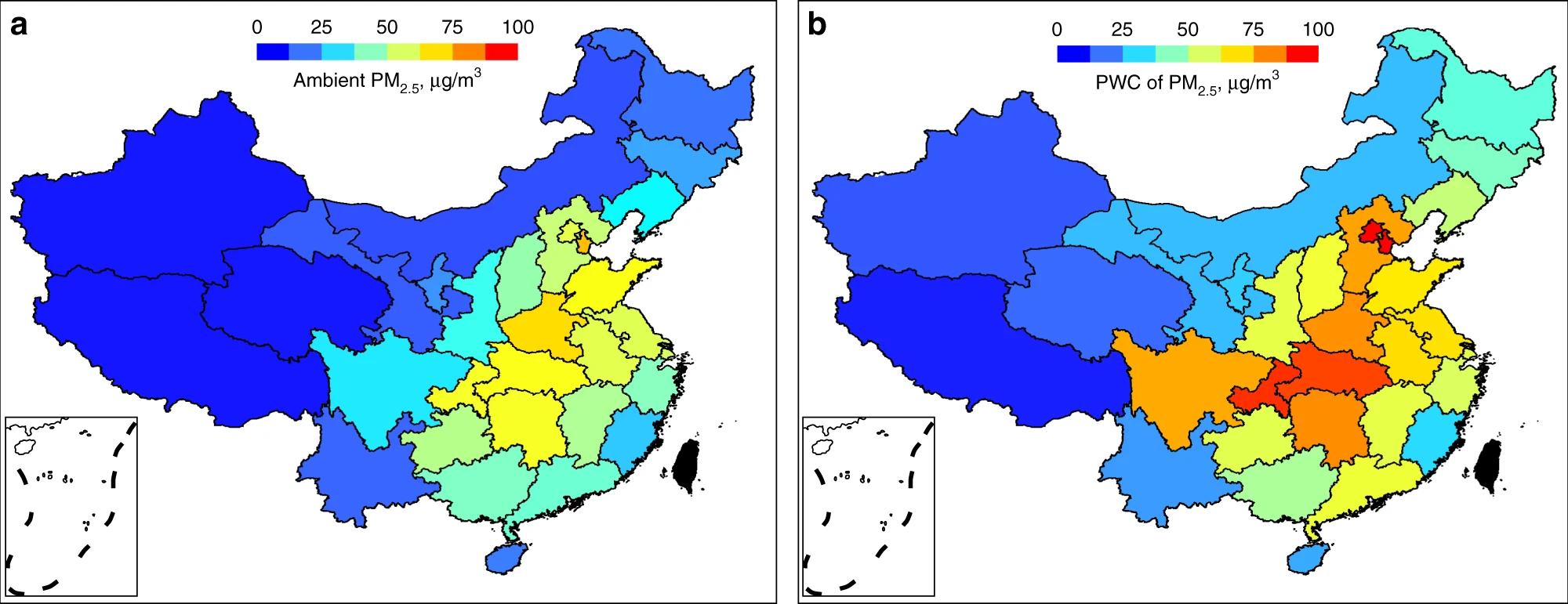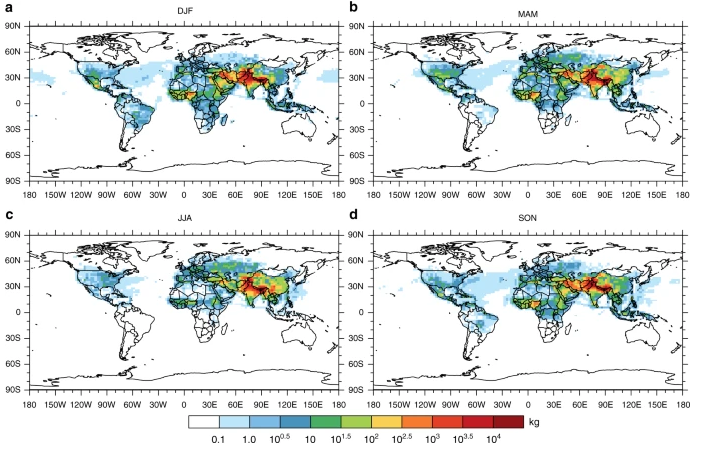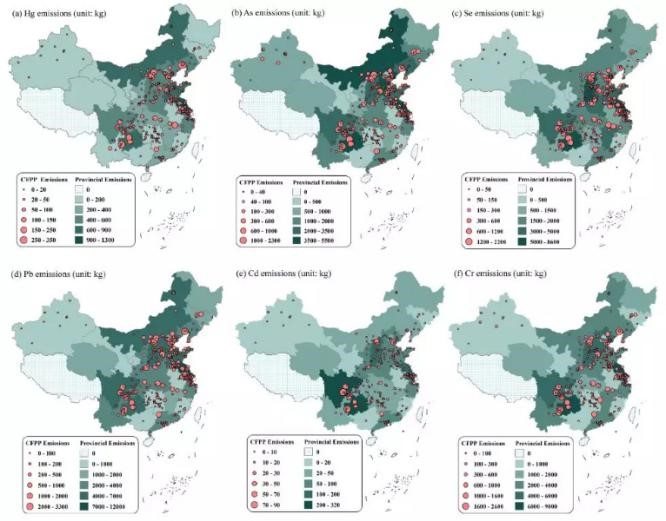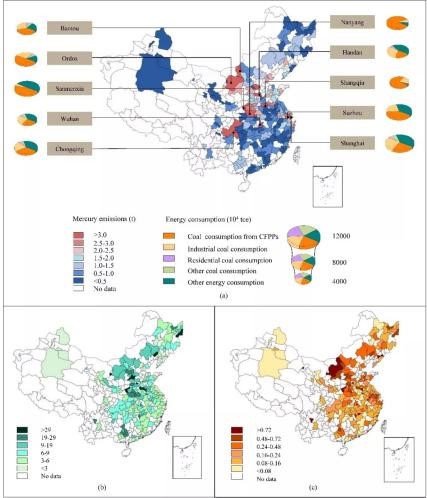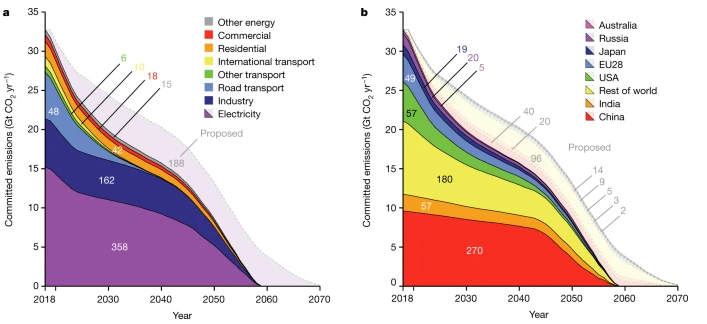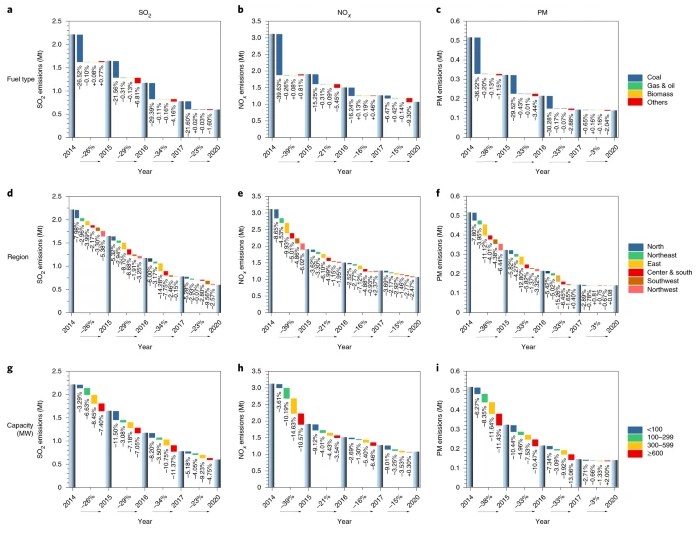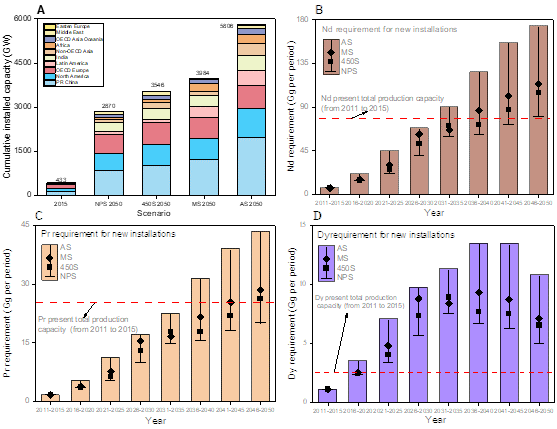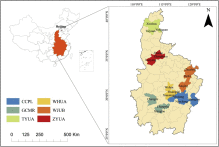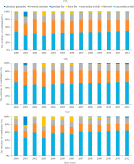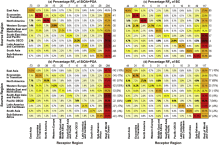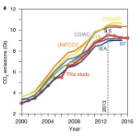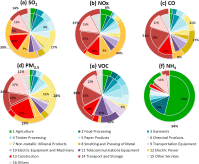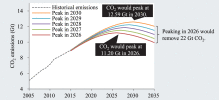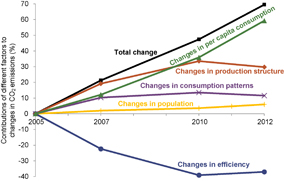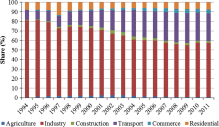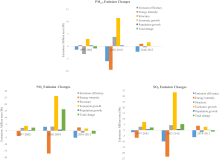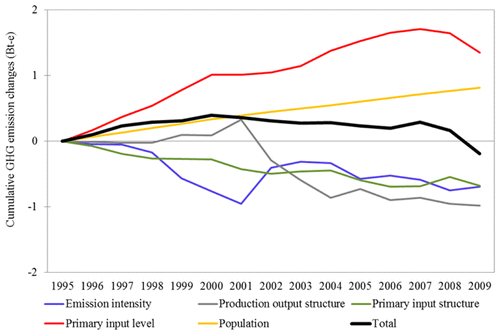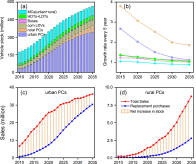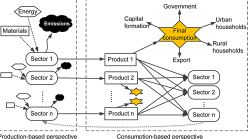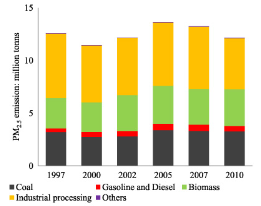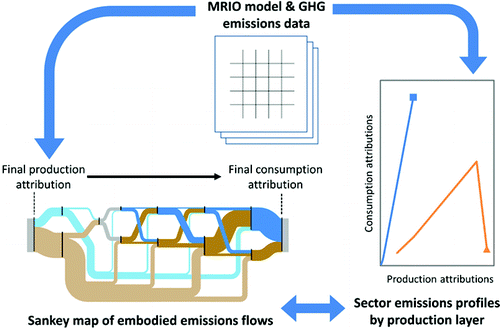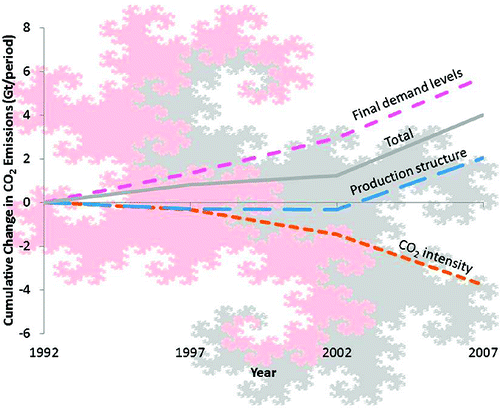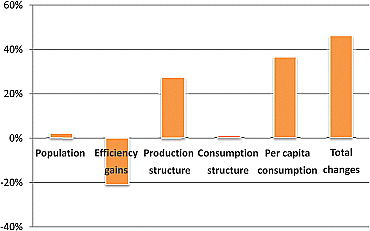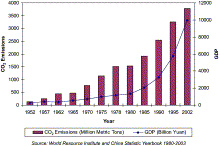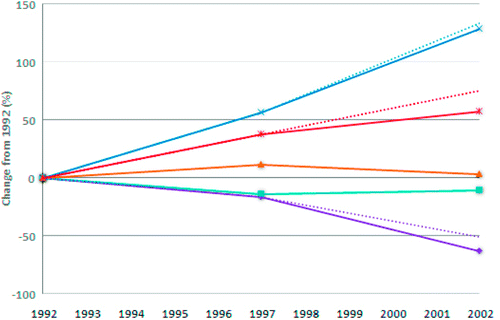排放源和驱动因子
-
Global mitigation efforts cannot neglect emerging emitters
International efforts to avoid dangerous climate change have historically focused on reducing energy-related CO2 emissions from countries with either the largest economies (e.g. the EU and the USA) and/or the largest populations (e.g. China and India). However, in recent years, emissions have surged among a different and much less-examined group of countries, raising concerns that a next generation of high-emitting economies will obviate...
-
Emission accounting and drivers in East African countries
East Africa is typical of the less developed economies that have emerged since the 21st century, whose brilliant economic miracle has also triggered the rapid growth of energy consumption and carbon dioxide emissions. However, previous carbon accounting studies have never focused on the region. Based on multi-source data, this paper rebuilt the 45-sectors carbon emission inventories of eight East African countries from 2000 to 2017, and ...
-
Heterogeneity of consumption-based carbon emissions and driving forces in Indian states
As the second most populous country in the world, India is on the way to rapid industrialization and urbanization, possibly becoming the next carbon giant. With its vast territory and high regional heterogeneity in terms of development stages and population, state-level consumption-based emissions patterns and driving forces are critical but unfortunately, remain far from completed. In this paper, we first applied a multi-regional input-...
-
Drivers of fluctuating embodied carbon emissions in international services trade
Service industries are generally considered “green” because of their marginal direct emissions; however, they account for 65% of the world gross domestic product and over 20% of total global trade in 2019. Here, we quantify the evolution of carbon emissions embodied in services trade from 2010 to 2018 and identify the driving factors of emission change at the global and regional scales. The annual growth rate of embodied emissions ex...
-
Dynamic driving forces of India's emissions from production and consumption perspectives
While India becomes one of the largest carbon emitters in the world with a high emission growth rate, existing studies fail to capture the recent trends and the key driving factors behind it. Here, by using multiregional input-output analysis and structural decomposition analysis, we measure the contribution of factors to the changes of India's domestic consumption and trade-related emissions. This study finds that India's per capita co...
-
Japan prefectural emission accounts and socioeconomic data 2007 to 2015
In the wake of the Fukushima nuclear disaster, Japan largely moved away from nuclear power generation and turned back towards an energy sector dominated by fossil fuels. As a result, the pace towards reaching emission reduction targets has largely slowed down. This situation indicates that higher emissions will continue to be generated if there is no appropriate and efficient measurement implemented to bridge the energy demand gap. To co...
-
China CO2 emission accounts 2016–2017
Despite China’s emissions having plateaued in 2013, it is still the world’s leading energy consumer and CO 2 emitter, accounting for approximately 30% of global emissions. Detailed CO 2 emission inventories by energy and sector have great significance to China’s carbon policies as well as to achieving global climate change mitigation targets. This study constructs the most up-to-date CO 2 emission inventories for China and its 30 ...
-
Kazakhstan's CO2 emissions in the post-Kyoto Protocol era: Production- and consumption-based analysi
The first commitment period of the Kyoto Protocol came to an end in 2012 and more developing countries began to participate in the new phase of world carbon emission reduction. Kazakhstan is an important energy export country and a pivot of the “Belt and Road Initiative” (BRI). Despite its emissions are relatively small compared with huge emitters such as China and the US, Kazakhstan also faces great pressure in terms of CO2 emission...
-
The slowdown in global air-pollutant emission growth and driving factors
Fine-particulate-matter pollution (PM 2.5 ) is linked to millions of deaths annually. Consumption in one region can cause production and PM 2.5 emissions in another, but the socioeconomic drivers of transboundary PM 2.5 emissions are not fully understood. Here, we quantify the driving factors of primary-particle and oxidized-precursor emissions from 2004 to 2011 at global and regional scales. The results indicate that the growth rate of...
-
Peak cement‐related CO2 emissions and the changes in drivers in China
In order to fight against the climate change, China has set a series of emission reduction policies for super-emitting sectors. The cement industry is the major source of process-related emissions, and more attention should be paid to this industry. This study calculates the process-related, direct fossil fuel–related, and indirect electricity-related emissions from China's cement industry. The study finds that China's cement-related ...
-
Impacts of air pollutants from rural Chinese households under the rapid residential energy transitio
Rural residential energy consumption in China is experiencing a rapid transition towards clean energy, nevertheless, solid fuel combustion remains an important emission source. Here we quantitatively evaluate the contribution of rural residential emissions to PM 2.5 (particulate matter with an aerodynamic diameter less than 2.5 μm) and the impacts on health and climate. The clean energy transitions result in remarkable reductions in th...
-
The cascade of global trade to large climate forcing over the Tibetan Plateau glaciers
Black carbon (BC) aerosols constitute unique andimportant anthropogenic climate forcers that potentially accelerate the retreatof glaciers over the Himalayas and Tibetan Plateau (HTP). Here we show that alarge amount of BC emissions produced in India and China-a region of BCemissions to which the HTP is more vulnerable compared with other region-arerelated to the consumption of goods and services in the USA and Europe throughinternationa...
-
Impact of a coal-fired power plant shutdown campaign on heavy metal emissions in China
Recently, China has committed to decommissioning theheavy metal (HM) intensive coal-fired power plants (CFPPs), small unitsespecially, yet a quantitative assessment for the impact on HM emissionsremains poorly understood. This study, for the first time, compiles aplant-specific inventory for six HMs (Hg,As,Se,Pb,Cd,and Cr) avoided by CFPPsdecommissioned in China during the 12th Five Year Plan period. The reduced HMamounts to 271.58 t (9....
-
A city-level inventory for atmospheric mercury emissions from coal combustion in China
Cities are essential entities for dedicatedmercury control policies. However, the city-level mercury emission inventory asthe cornerstone of proper policy design is still in its infancy, due to dataavailability. For the first time, this study developed a comprehensivecity-level atmospheric mercury emission inventory from coal combustion in Chinain 2010, by updating emission factors based on high-resolution information suchas the plant-s...
-
Committed emissions from existing energy infrastructure jeopardize 1.5℃ climate target
Net anthropogenic emissions of carbondioxide (CO2) must approach zero by mid-century (2050) in order to stabilizethe global mean temperature at the level targeted by international efforts. Yetcontinued expansion of fossil-fuel-burning energy infrastructure impliesalready‘committed’future CO2 emissions. Here we use detailed datasets of existingfossil-fuel energy infrastructure in 2018 to estimate regional and sectoralpatterns of comm...
-
Substantial emission reductions from Chinese power plants after the introduction of ultra-low emissi
In 2014, China introduced an ultra-low emissions (ULE)standards policy for renovating coal-fired power-generating units to limit SO2,NOx and particulate matter (PM) emissions to 35, 50 and 10 mg m−3, respectively. The ULEstandard policy had ambitious levels (surpassing those of all other countries)and implementation timeline. We estimate emission reductions associated withthe ULE policy by constructing a nationwide, unit-level, hou...
-
Critical Rare-Earth Elements Mismatch Global Wind-Power Ambitions
Wind power needs to be expanded rapidlyacross the world to stabilize our climate. However, there are increasingconcerns about conflicts between the supply of rare-earth elements (REs)(mainly neodymium, praseodymium, and dysprosium) and the global expansion ofwind power. Here, we provide a dynamic, technology-rich, and regional-specificapproach to exploring such conflicts among ten world regions through 2050 underfour widely recognized c...
-
Patterns of CO2 emissions in 18 central Chinese cities from 2000 to 2014
With the Rise of Central China Plan, the central region has had a great opportunity to develop its economy and improve its original industrial structure. However, this region is also under pressure to protect its environment, keep its development sustainable and reduce carbon emissions . Therefore, accurately estimating the temporal and spatial dynamics of CO 2 emissions and analysing the factors influencing these emissions are especiall...
-
The spatiotemporal features of greenhouse gases emissions from biomass burning in China from 2000 to
Greenhouse gases emissions from biomass burning have been given a little attention, especially the spatiotemporal features of biomass burning sources and greenhouse gases emissions have not been comprehensively uncovered. This research undertook IPCC bottom-up inventory guideline to estimate Chinese greenhouse gases emissions from biomass burning and applied geographical information system to reveal biomass burning emissions spatiotempo...
-
Socioeconomic and atmospheric factors affecting aerosol radiative forcing: Production-based versus c
There exist substantial differences in top-of-atmosphere direct radiative forcing of aerosols due to a region's economic production (RF p ) and consumption (RF c ), in the context of economic globalization, trade and globalizing air pollution. Yet an explicit systematic analysis of all socioeconomic and atmospheric factors determining the RF difference is lacking. Here, we evaluate five socioeconomic (population, per capita output, emiss...
-
Carbon emission imbalances and the structural paths of Chinese regions
As the Chinese regions become more and more connected to each other and foreign countries, this study aims to address carbon imbalance and outsourcing issues in China. Using a production-based carbon emission inventory and a China-global multi-regional input-output model, this study estimates the consumption-based carbon emissions in 30 Chinese regions in 2007 and 2010. Our results reveal that the carbon imbalances of most Chinese provin...
-
The comprehensive environmental efficiency of socioeconomic sectors in China: An analysis based on a
The increasingly high frequency of heavy air pollution in most regions of China signals the urgent need for the transition to an environmentally friendly production performance by socioeconomic sectors for the sake of people's health and sustainable development. Focusing on CO 2 and major air pollutants , this paper presents a comprehensive environmental efficiency index based on evaluating the environmental efficiency of major socioecon...
-
Structural decline in China’s CO2 emissions through transitions in industry and energy systems
As part of the Paris Agreement, China pledged to peak its CO 2 emissions by 2030. In retrospect, the commitment may have been fulfilled as it was being made—China’s emissions peaked in 2013 at a level of 9.53 gigatons of CO 2 , and have declined in each year from 2014 to 2016. However, the prospect of maintaining the continuance of these reductions depends on the relative contributions of different changes in China. Here, we quantita...
-
Demand-driven air pollutant emissions for a fast-developing region in China
Guangdong is one of many fast-developing regions in China that are confronting the challenges of air pollution mitigation and sustainable economic development. Previous studies have focused on the characterization of production-based emissions to formulate control strategies, but the drivers of emission growth and pattern changes from the consumption side have rarely been explored. In this study, we used environmentally extended input-o...
-
Socioeconomic impact assessment of China's CO2 emissions peak prior to 2030
China is the largest emitter of carbon emissions in the world. In this paper, we present an Integrated Model of Economy and Climate (IMEC), an optimization model based on the input-output model. The model is designed to assess the tradeoff between emission deceleration and economic growth. Given that China's projected average growth rate will exceed 5% over the next two decades, we find that China may reach its peak CO 2 emissions levels...
-
Pattern changes in determinants of Chinese emissions
The Chinese economy has been recovering slowly from the global financial crisis, but it cannot achieve the same rapid development of the pre-recession period. Instead, the country has entered a new phase of economic development—a 'new normal'. We use a structural decomposition analysis and environmental input–output analysis to estimate the determinants of China's carbon emission changes during 2005–2012. China's imports are linked...
-
Using an extended LMDI model to explore techno-economic drivers of energy-related industrial CO2 emi
Although investment and RD activities can exert significant effects on energy-related industrial CO2 emissions (EICE), related factors have not been fairly uncovered in the existing index decomposition studies. This paper extends the previous logarithmic mean Divisia index (LMDI) decomposition model by introducing three novel factors (RD intensity, investment intensity, and RD efficiency). The extended model not only considers the conve...
-
Driving forces of Chinese primary air pollution emissions: an index decomposition analysis
Emissions of the fine particulate matters (diameter of 2.5μm or less) caused by both the primary particle emissions and the precursor emission sources such as sulfur dioxide and nitrogen oxides , have contributed significantly to poor urban air quality in China, and have attracted tremendous public attention over the past few years. This study provides an interdisciplinary study to investigate the key contributors driving air pollution ...
-
Socioeconomic Drivers of Greenhouse Gas Emissions in the United States
Existing studies examined the U.S.'s direct GHG emitters and final consumers driving upstream GHG emissions, but overlooked the U.S.'s primary suppliers enabling downstream GHG emissions and relative contributions of socioeconomic factors to GHG emission changes from the supply side. This study investigates GHG emissions of sectors in the U.S. from production-based (direct emissions), consumption-based (upstream emissions driven by final...
-
Determinants of global CO2 emissions growth
This paper analyzes global CO 2 emissions growth by fossil fuel type (coal, oil or gas), demand type (consumption or investment), country group (developed or developing country) and industry group. The results indicate that, among the three fossil fuels, CO 2 emissions from coal use grew the most rapidly in developing countries, by 3.76Gt in the period 1995–2009. By contrast, CO 2 emissions from natural gas use grew the most rapidly in...
-
Assessment of electrical vehicles as a successful driver for reducing CO2 emissions in China
This paper analyses the impacts of the gasoline vehicle replacement programme with EVs at different penetration rates on petroleum and electricity sectors and their CO 2 emissions. The study utilises a top-down-type Environmental Input–Output (EI–O) model. Our results show that the replacement of gasoline cars with EVs causes greater impacts on total gasoline production than on total electricity generation. For example, at 5%, 20%, 5...
-
Climate change mitigation in Chinese megacities: A measures-based analysis of opportunities in the r
China’s commitment to the UNFCCC to peak its emissions by 2030, or sooner, signaled a long anticipated shift in China’s model of development with far reaching consequences. Cities in China, and particularly the residential sector in cities, will be charged with making significant reductions in emissions growth even as rates of urbanization continue to climb. Focusing on Beijing and Shanghai, this paper carries out a measures-based ec...
-
How will greenhouse gas emissions from motor vehicles be constrained in China around 2030?
Increasing emissions from road transportation endanger China’s objective to reduce national greenhouse gas (GHG) emissions. The unconstrained growth of vehicle GHG emissions are mainly caused by the insufficient improvement of energy efficiency (kilometers traveled per unit energy use) under current policies, which cannot offset the explosion of vehicle activity in China, especially the major southern provinces. More stringent polices ...
-
Examining Air Pollution in China Using Production- And Consumption-Based Emissions Accounting Approa
Two important reasons for China’s air pollution are the high emission factors (emission per unit of product) of pollution sources and the high emission intensity (emissions per unit of GDP) of the industrial structure. Therefore, a wide variety of policy measures, including both emission abatement technologies and economic adjustment, must be implemented. To support such measures, this study used the production- and consumption-based e...
-
The socioeconomic drivers of China's primary PM2.5 emissions
Primary PM 2.5 emissions contributed significantly to poor air quality in China. We present an interdisciplinary study to measure the magnitudes of socioeconomic factors in driving primary PM 2.5 emission changes in China between 1997–2010, by using a regional emission inventory as input into an environmentally extended input–output framework and applying structural decomposition analysis. Our results show that China's significant ef...
-
Comparative Analysis of Carbonization Drivers in China's Megacities
This study investigates the key drivers affecting emission increases in terms of population growth, economic growth, industrial transformation, and energy use in six Chinese megacities: Beijing, Shanghai, Tianjin, Chongqing, Guangzhou, and Hong Kong. The six cities represent the most‐developed regions in China and they have similar per capita carbon dioxide (CO 2 ) emissions as many developed countries. There is an urgent need to quant...
-
Analyzing Drivers of Regional Carbon Dioxide Emissions for China
China faces the challenge of balancing unprecedented economic growth and environmental sustainability. Rather than a homogenous country that can be analyzed at the national level, China is a vast country with significant regional differences in physical geography, regional economy, demographics, industry structure, and household consumption patterns. There are pronounced differences between the much‐developed Eastern‐Coastal economic...
-
Low-carbon development in the least developed region: a case study of Guangyuan, Sichuan province, s
The Wenchuan earthquake in 2008 has resulted in 50% of Guangyuan city facing recovery from different extents of damages. The massive reconstruction provides a good opportunity for Guangyuan city to response to the National Council’s call for tackling climate change by developing a harmonised and low-carbon economy. However, there are many arguments about the definition of ‘low carbon’ and the framework that low-carbon development s...
-
Mapping Flows of Embodied Emissions in the Global Production System
Environmentally extended multiregional input-output (MRIO) analysis can be used to investigate final production and consumption attributions of emissions. As the distinction between the two attributions has been brought to the attention of policy-makers, there is an ever greater need to understand how and why they differ, by analyzing the connections between production and consumption activities. Seeking to meet this need, we present an ...
-
A “Carbonizing Dragon”: China’s Fast Growing CO2 Emissions Revisited
China’s annual CO 2 emissions grew by around 4 billion tonnes between 1992 and 2007. More than 70% of this increase occurred between 2002 and 2007. While growing export demand contributed more than 50% to the CO 2 emission growth between 2002 and 2005, capital investments have been responsible for 61% of emission growth in China between 2005 and 2007. We use structural decomposition analysis to identify the drivers for China’s emissi...
-
Journey to world top emitter: An analysis of the driving forces of China's recent CO2 emissions surg
China's economy has been growing at an accelerated rate from 2002 to 2005 and with it China's carbon emissions. It is easier to understand the growth in China's carbon emissions by considering which consumption activities ‐ households and government, capital investments, and international trade ‐ drive Chinese production and hence emissions. This paper adopts structural decomposition analysis, a macro‐economic approach using data f...
-
Lifestyles, technology and CO2 emissions in China: A regional comparative analysis
With rapid economic development, higher income levels, urbanization and other socio-economic drivers, people's lifestyles in China have changed remarkably over the last 50years. This paper uses the IPAT model (where I =Impact representing CO 2 emissions, P =Population, A =Affluence, and T =emission intensity) to analyze how these main drivers contributed to the growth of CO 2 emissions over this time period. Affluence or lifestyle chang...
-
The drivers of Chinese CO2 emissions from 1980 to 2030
China's energy consumption doubled within the first 25 years of economic reforms initiated at the end of the 1970s, and doubled again in the past 5 years. It has resulted of a threefold CO 2 emissions increase since early of 1980s. China's heavy reliance on coal will make it the largest emitter of CO 2 in the world. By combining structural decomposition and input–output analysis we seek to assess the driving forces of China's CO 2 emis...
-
The contribution of Chinese exports to climate change
Within 5 years, China's CO 2 emissions have nearly doubled, and China may already be the world's largest emitter of CO 2 . Evidence suggests that exports could be a main cause for the rise in Chinese CO 2 emissions; however, no systematic study has analyzed this issue, especially over time. We find that in 2005, around one-third of Chinese emissions (1700Mt CO 2 ) were due to production of exports, and this proportion has risen from 12% ...
-
China's Growing CO2 EmissionsA Race between Increasing Consumption and Efficiency Gains
China's rapidly growing economy and energy consumption are creating serious environmental problems on both local and global scales. Understanding the key drivers behind China's growing energy consumption and the associated CO 2 emissions is critical for the development of global climate policies and provides insight into how other emerging economies may develop a low emissions future. Using recently released Chinese economic input−outp...

